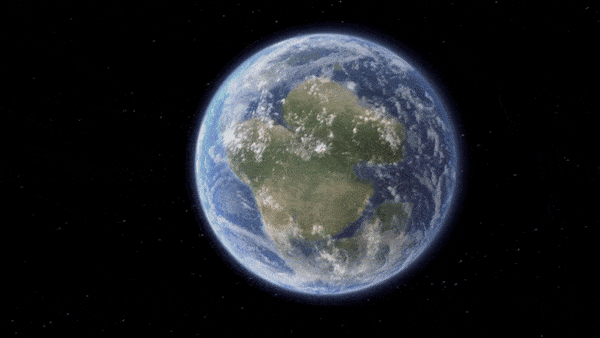When you purchase through links on our site , we may take in an affiliate commission . Here ’s how it works .
Earth ’s control surface is ever - vary , withtectonic platesgrinding and shifting , work up mountain reach , attract apart ocean floors and induce dramatic earthquakes .
Now , new research add up to the growing body of grounds that these dynamics started 3.2 billion years ago . While there is contention within the geoscience community about exactly when Earth became more than just a blob of red-hot , uniform rock , the new work evoke that this modulation happened about 1.3 billion years after the planet formed .

The fingerprints of Earth’s plate tectonics have been found in deposits dating back 3.2 billion years.
" Three - item - two billion is the tipping period , " study co - authorZheng Xiang Li , a geodynamicist at Curtin University in Australia , tell apart Live Science .
In 2020 , Li and his colleaguesreportedthere was a shift in the chemistry of the rocks that organise in the mantle about 3.2 billion years ago , hinting that a " remixing " process took home . This process would have involve mineral being transported from the crust down into the mantle , and mantle rocks locomote up to the control surface — the fingerprints of plate plate tectonic theory . Other researcher have also run into evidence of a transmutation at this same time period ; for example , a 2020 study in the journalScience Advancesfound magnetised evidence for large - scale plate motion 3.2 billion years ago .
But there is still public debate about when and how these appendage start , Li said .

When did plate tectonics begin?
In the new subject field , he andLuc Doucet , a geochemist at Curtin University , along with their fellow worker , focused on bombastic lead - Zn repository in Australia . The scientists used the ratio of molecular variations of U , thorium and lead as a clock to measure case that happened deep in Earth ’s history .
interrelate : Is Africa splitting into two continents ?
The deposits in Australia span from 3.4 billion years ago to 285 million class ago , study atomic number 27 - authorDenis Fougerouseof Curtin University said in astatement .

The new analytic thinking again pointed at 3.2 billion years as a turning point , Li said . Before then , Earth had differentiated into the " stratum patty " pattern of nitty-gritty , mantle and crust that is still seen today . This layering was drive by graveness , with heavier elements sinking to the core and loose elements rise to the crust , Li said .
However , 3.2 billion years ago , these layers start to remix , with plate tectonics driving slabs of crust back into the mantle , and force play such as volcanism bringing Mickey Charles Mantle elements up to the surface .
The investigator also found that the induction of this process was complicated and not needs timed exactly the same all across the satellite . The new finding , reported in the August edition of the journalEarth - Science Reviews , show that researchers need to recalibrate the U - thorum - lead dating system to capture these nuances .

— New study describes how Earth ’s surface motility
— Oldest evidence of architectonic plates excavate , sealed in ancient crystal
— Facts about Pangea , the ancient supercontinent

" If we do n’t apportion with it cautiously , we might have tens of trillion or hundred of trillion of age of error in the age , " Li say .
The researcher are now using computer simulations to understand how plate tectonics in all probability lead off 3.2 billion years ago . The cooling of the satellite from a magma ocean to something more temperate and solid may have play a major role , Li say .
" Our first motivation is to document how the whole Earth evolved from the early carmine ball through home plate tectonics to the green marble we have now , " he articulate .












